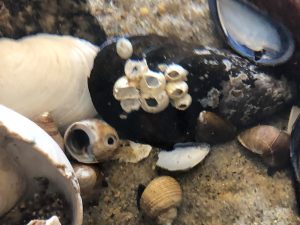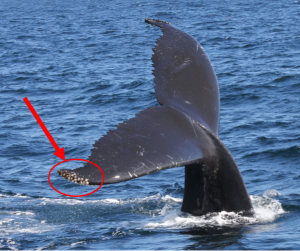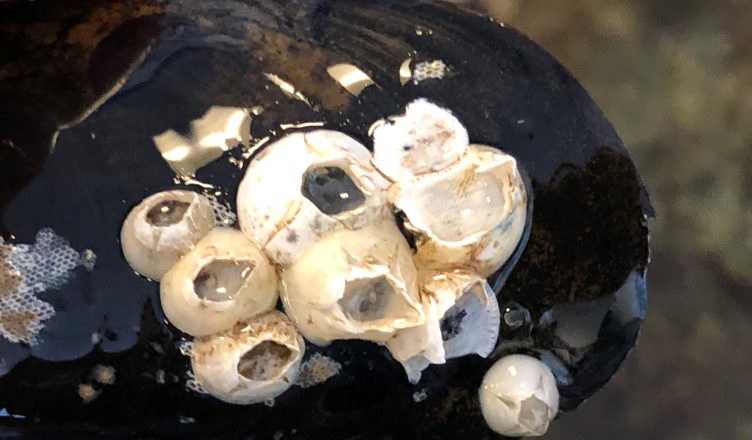This is part of our series about different animals and events at our Blue Ocean Discovery Center. This month we will discuss a Discovery Center inhabitant: the barnacle.
Most people are familiar with the white crusty structures on our intertidal rocks that can painfully cut bare feet, but few visitors to the Discovery Center are aware that barnacles are living animals. Many visitors are intrigued by our display of the feeding barnacles and enjoy watching the barnacles’ legs moving in and out of their shells as they trap plankton for their meals.
Barnacles are in the same group of animals as crabs and lobsters but they certainly don’t look like them. Barnacles live in white volcano-shaped shells that are made of calcium.

Life History
Barnacles begin life as fertilized eggs that float in the ocean. They cement themselves to a suitable substrate that is determined by the surface composition, moisture, location and proximity to other barnacles. The cement is secreted from the base of their antennae and they spend their entire adult life in the same place, standing on their heads, kicking their legs out of their shell to catch their food. If a barnacle is dislodged from its substrate, it is unable to reattach itself and it will die. Barnacles grow bigger by adding calcium to their shells and by molting inside the shell.
Habitat and Anatomy
Unlike crabs and lobsters, barnacles don’t have gills. Barnacles are frequently found in the intertidal zone and can live for hours without being submerged in water. They trap moisture in their shells and absorb oxygen out of the water through their legs. They also do not have a heart or eyes like their crustacean relatives but they can sense light and dark.
Most barnacles live in shallow or tidal water. Some attach to ships and whales. Barnacles on ships can be quite a problem because they slow the ships down, decreasing fuel efficiency. Many boat owners apply expensive anti-fouling paint to their ships’ hulls to prevent barnacles from attaching to them.
Barnacles and Whales
Most scientists agree that barnacles do not harm whales because the drag produced from the barnacle is not enough to affect the whales and the whale is not hurt by the cement of the barnacles. Scientists speculate that whales breach to dislodge barnacles, but this is not known for sure. What is known for sure is that hitch hiking barnacles on whales are able to move to plankton rich areas where ones on rocks or pilings will never move.
Scientists have recently studied the chemicals in fossilized whale barnacles and have determined that whales have been using the same migration patterns for hundreds of thousands of years. Be sure to see the preserved whale barnacles at the BODC. These barnacles were removed from Snowplow, a dead humpback whale that washed up on Rye Beach in 2016.

Predators
Barnacles have many predators including whelks, worms, fish, crabs, and sea stars. In our tanks at the Discovery Center, the sea stars devour the barnacles. Fortunately, there is no shortage of barnacles on the rocks in Hampton Harbor.
Barnacles and Humans
People often ask if an animal has any value to humans other than playing a role in the ecosystem. Scientists have studied the cement that barnacles and other ocean animals such as mussels produce and they are using that information to make bioadhesives for medical implants. A glue that sticks underwater is valuable both to the barnacle and to the medical field.
The next time you see a barnacle, be sure to observe them kicking their legs out in their feeding behavior and think about them standing on their heads in their volcano-like homes. There certainly is a lot of diversity in the animal kingdom!






